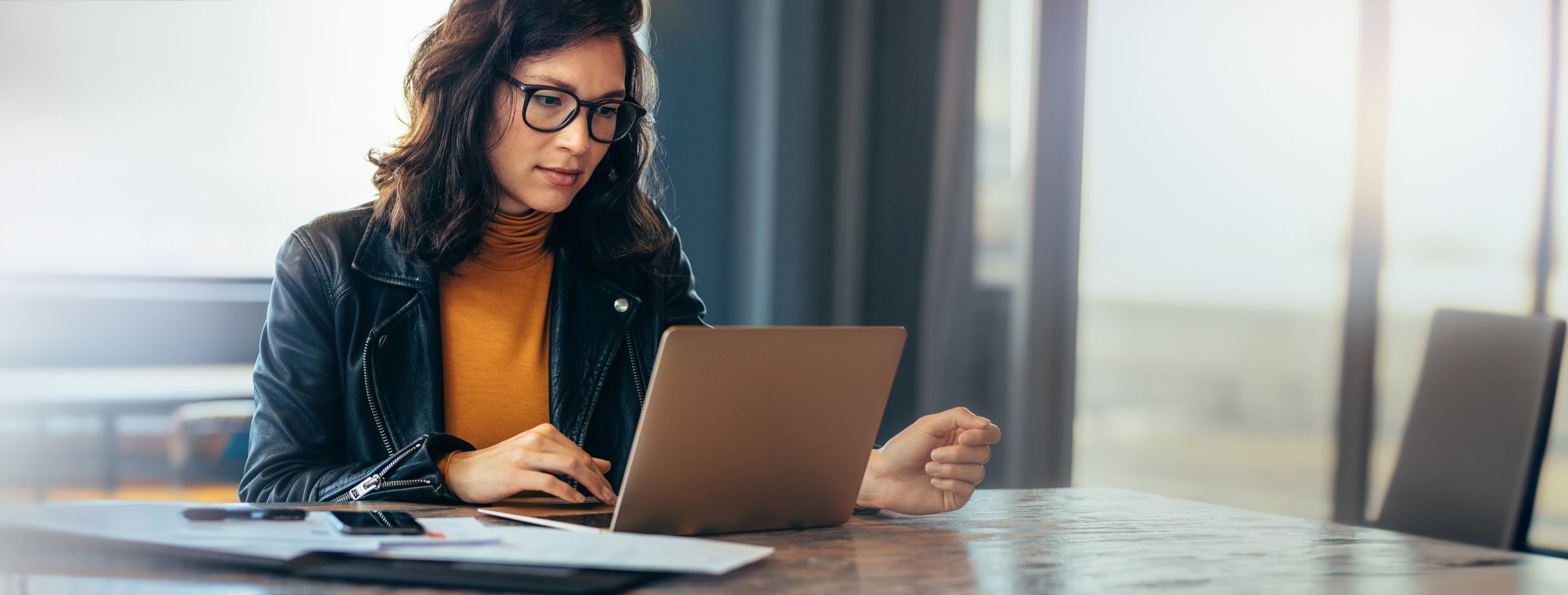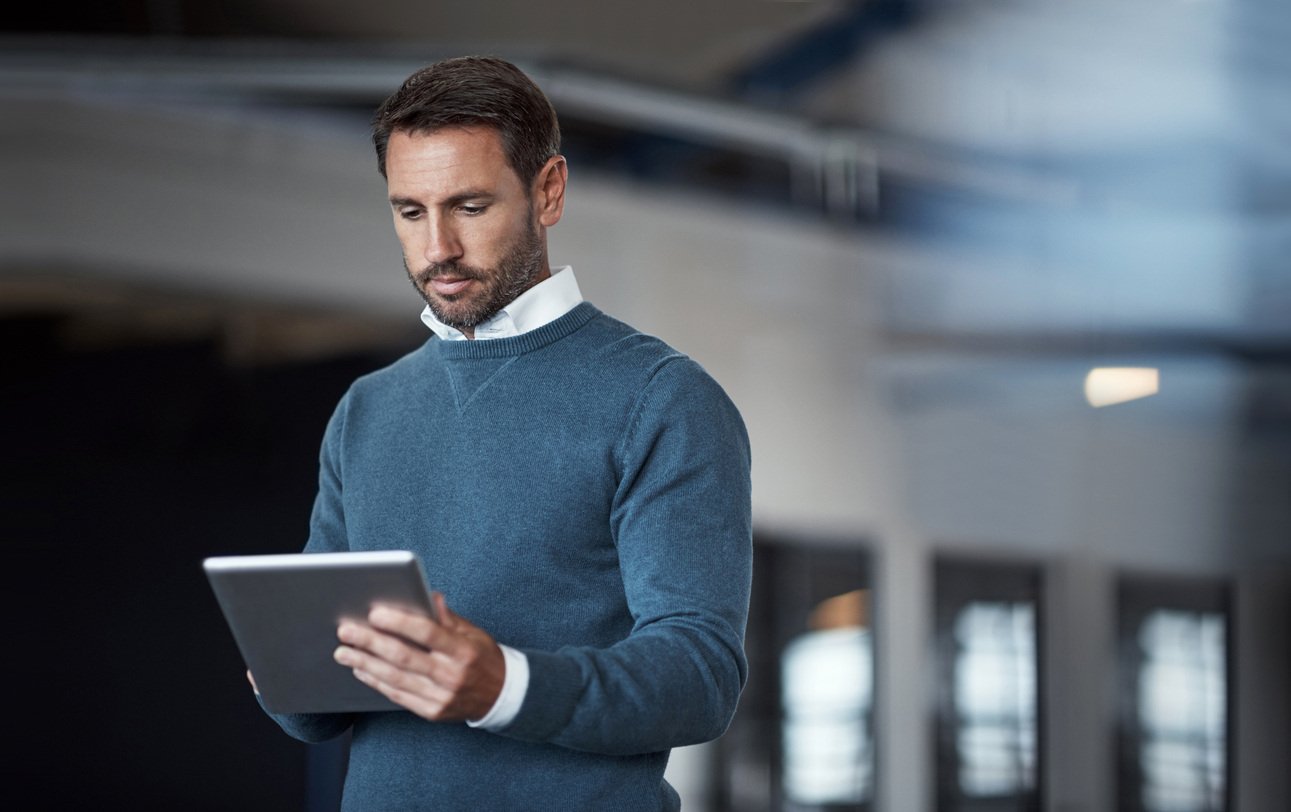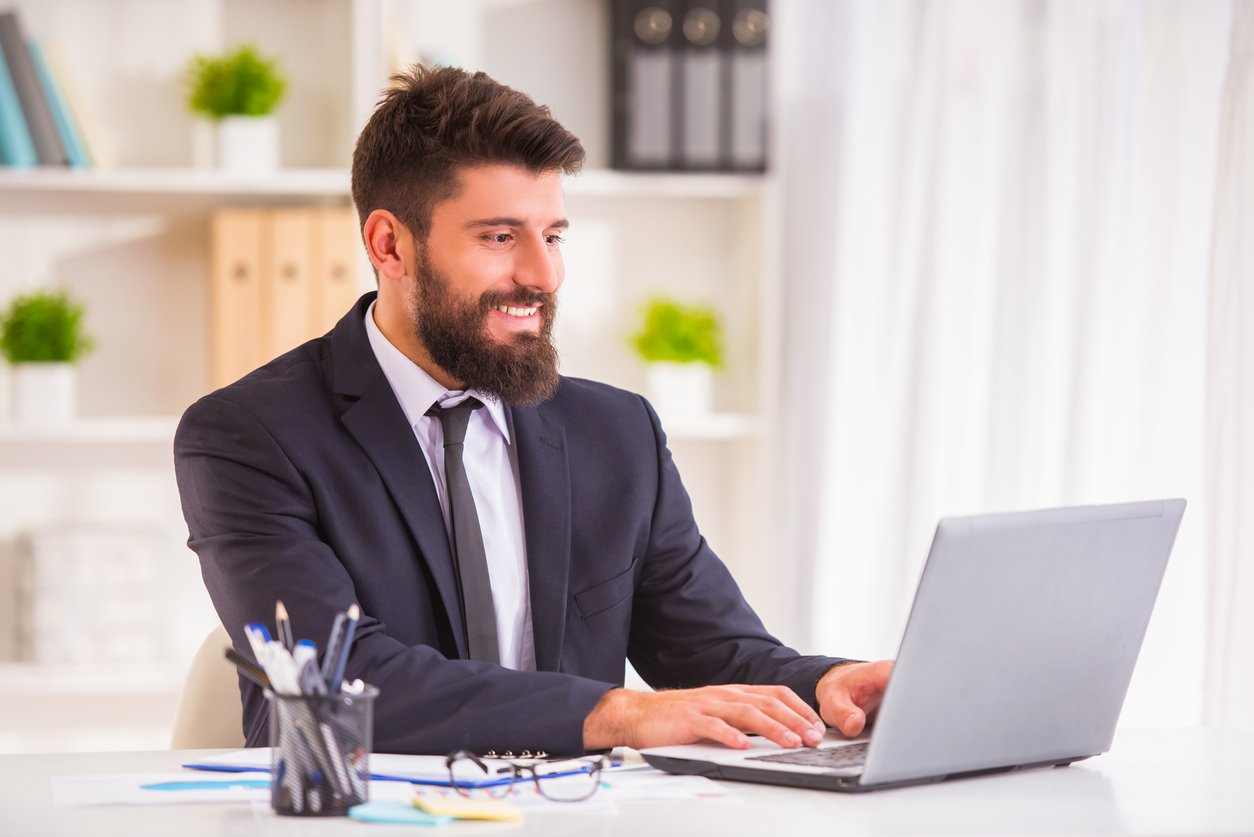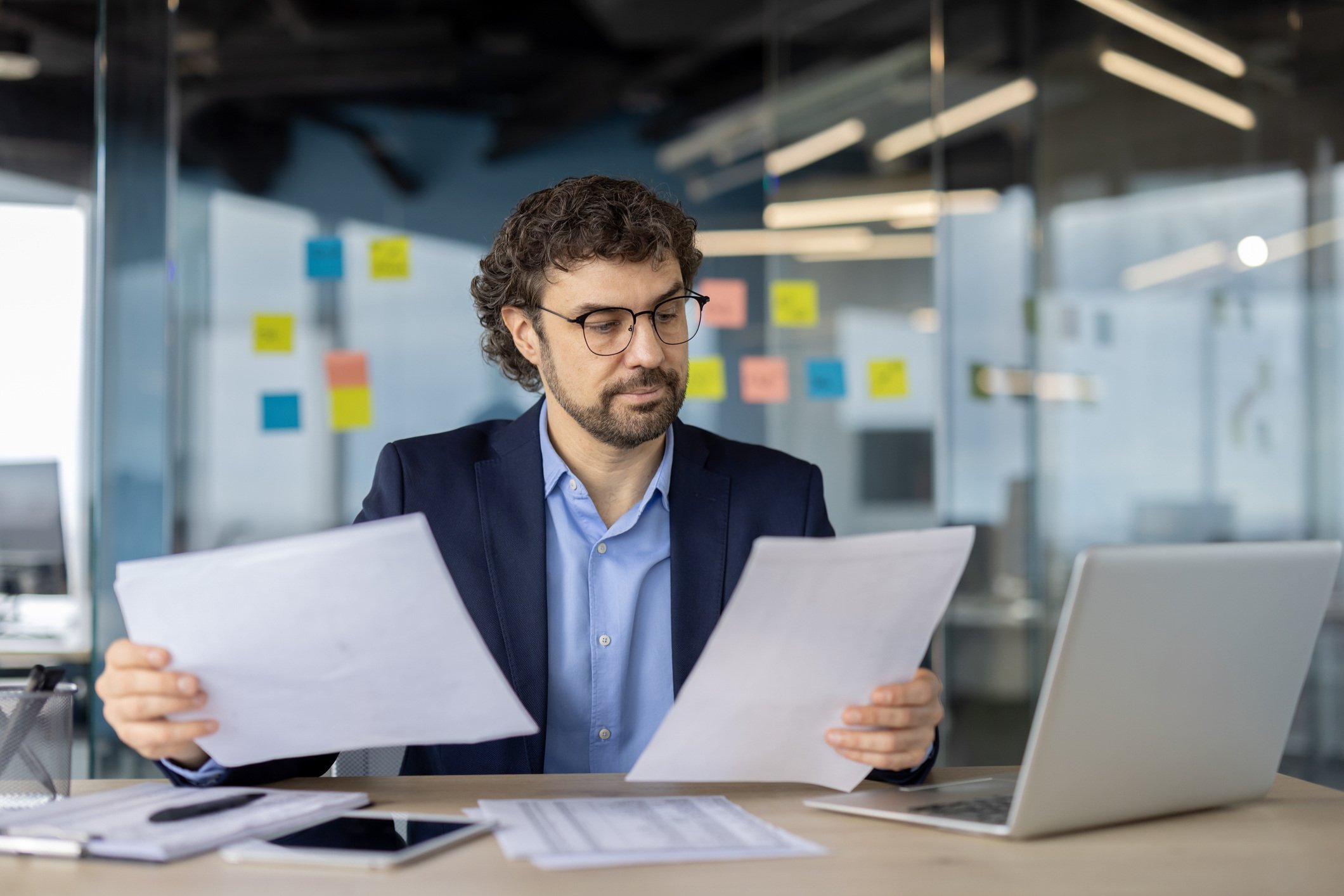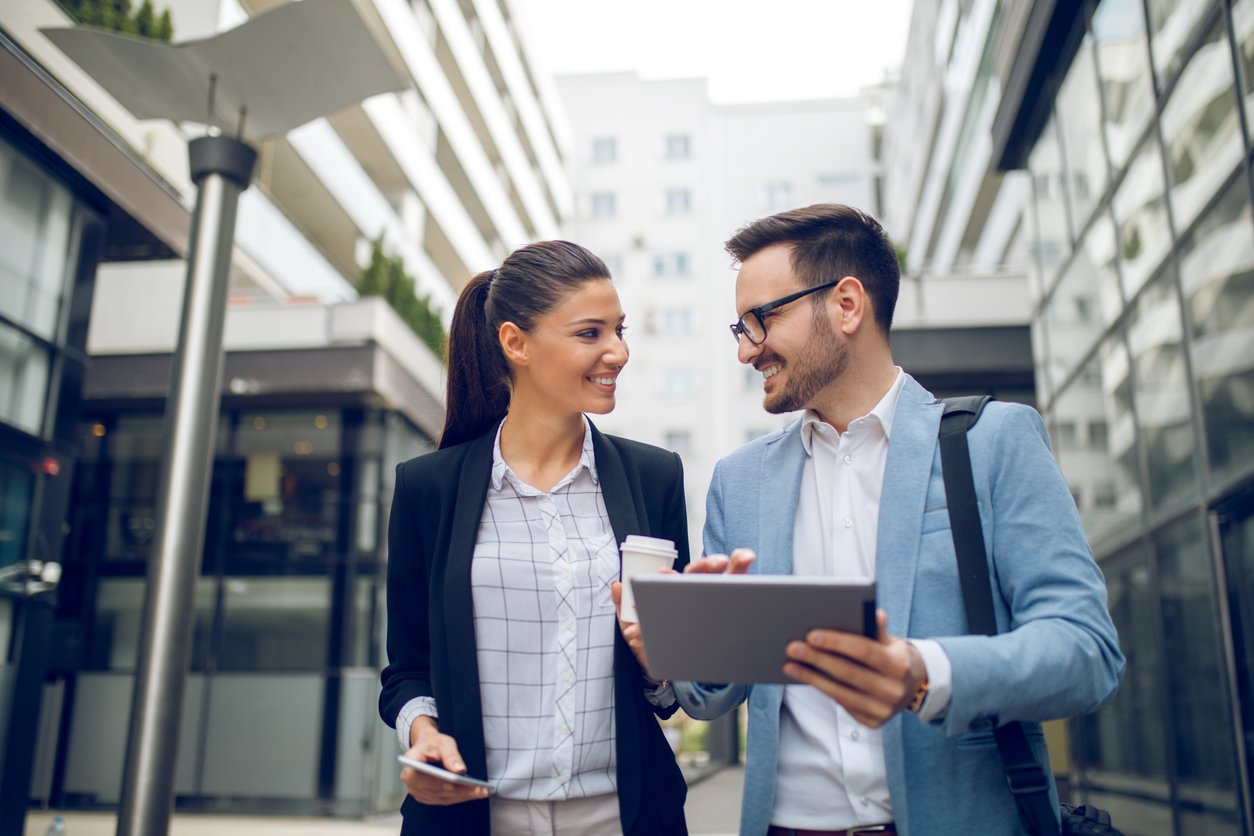
Inside vs Outside Sales: The Ultimate Comparative Guide
 Updated on
Updated on
 By Bradley Kovacs
By Bradley Kovacs
Bradley Kovacs
Bradley has been passionate about technology since childhood, starting with Microsoft Flight Simulator at age six. In college, he automated his data e...
learn more
Bradley Kovacs
Bradley has been passionate about technology since childhood, starting with Microsoft Flight Simulator at age six. In college, he automated his data e...
Table of Contents
Table of Contents
Are you ready to grow your company?
Stuck in a rut?
Not sure if you should focus on inside or outside sales?
Maybe you should focus on inside sales and outside sales together?
Feeling confused about inside versus outside sales completely?
If so, perhaps it's time to quit altogether.
We joke, of course.

Maybe inside sales, completed from a remote office, is the best fit for your business model. Or, maybe outside sales, conducted by individual sales reps focused on making sales through connection, is the best fix.
Keep reading to find out all you need to know about the difference between inside and outside sales, pros, cons, who it's best for, etc.
What is Inside Sales vs Outside Sales?
What's the difference between inside sales and outside sales?
Simply put, Inside sales are inside. Outside sales are outside. It's a bit more complicated than that, but not much.
Let's elaborate in detail below. But first, some quick differences between the two…
|
Aspect |
Inside |
Outside |
|
Main Advantages |
|
|
|
Main Disadvantages |
|
|
|
Typically Used For |
|
|
What is Considered Inside Sales?
Inside sales refers to remote selling. Instead of traveling to meet clients, inside sales reps work from a centralized location, often using phones, CRMs, email, and video conferencing.
This method relies on Sales Development Representatives (SDRs) and Account Executives (AEs) who manage outreach and pipelines using tools like automated dialing, lead scoring, and scheduled cadences. Because most of the sales cycle is managed digitally, inside sales strategies can be easily replicated across large territories.
Predictability and efficiency are key advantages. Sales cadences remain consistent, which allows for more accurate projections. Costs are significantly lower since the bulk of expenses are software tools—not travel or fieldwork.
Outside Sales Definition

Outside sales, also known as field sales, involve face-to-face selling. Outside sales reps travel to meet prospects in person through scheduled meetings, trade shows, or even door-to-door visits.
In the classic sense, think of outside sales as the traditional salesperson: on the road, building relationships, and closing deals face-to-face. These reps typically manage a smaller set of high-value clients, making this model ideal for industries where personal connection is key.
Because outside reps operate independently and adapt to each in-person interaction, their sales processes are harder to standardize or replicate. But when executed well, outside sales strategies can result in a 40% higher close rate.
Typical Environments and Industries Using Inside Sales
Inside sales dominate in modern, tech-forward sectors, especially where scalability and speed are important. You'll commonly find inside sales teams in:
- SaaS companies
- B2B lead generation firms
- Digital marketing agencies
- Telecommunications providers
- E-commerce and subscription services
These industries benefit from the difference between inside and outside sales by choosing a method that supports lean, repeatable, and cost-efficient outreach. The ability to cover broad territories from a central office is a major selling point.
Common Scenarios and Sectors Utilizing Outside Sales
Outside sales still have a strong foothold in sectors where relationship-building and in-person demonstration are vital. Typical environments include:
- Enterprise software or large-scale B2B deals
- Medical or pharmaceutical sales
- Industrial equipment or real estate
- Luxury goods and automotive sales
- Trade shows and field events
In these cases, outside sales vs inside sales is less about cost and more about connection. When a handshake or live demo is the difference between a win and a loss, outside sales reps have the upper hand.
Other Types of Sales

The term sales is a bit of an umbrella term with a lot of nuances underneath. Because of this, other types of sales fall into inside vs. outside sales categories.
Other types include:
- Field sales
- Door-to-Door Sales
- Outbound Sales
- Direct Sales
- Consultative Sales
Field Sales
This kind of selling is the oldest sales tactic in the book.
A field sales vs inside sales rep's day will differ in a few ways. A field sales rep has a lot of autonomy over their flexible (sometimes unpredictable) schedule. They are responsible for initiating contact, setting up meetings, and often travel frequently.
Field sales include pharmaceutical companies, food service, and manufacturing industries. SDRs in field sales have a complex sales cycle and lower close rate, but the sales they close are often higher-value, longer-term customers.
Door-To-Door Sales
Door-to-door sales (or D2D) don't exactly go like Adele and the otter here, but almost.
D2D sales is a canvassing technique where sales reps sell to potential customers in their own homes. Tactics for D2D sales use things like product demonstrations to sell, build trust, and gain customers.
D2D sales are considered one of the most lucrative outside sales strategies because they are scalable, provide market research, and a personal connection, and there are no ads for a potential customer to get distracted or frustrated.
Outbound Sales
Outbound sales focus on outbound channels. Sounds a bit cliche, we know.
Tactics for outbound sales include cold calling, cold emailing, and social media marketing.
Other outbound sales tactics are viewed as invasive and a bit aggressive since they include paid email list building and one-way communication.
The big takeaway for outbound sales is this: outbound sales find customers, and in inbound sales, customers find you.
Direct Sales
Remember when your mom would drag you to a Home Interior or Tupperware party? Or worse, host one?
Yeah, us too.
In short, that's direct sales, often associated with multi-level or network marketing and parties like that.
The real definition of direct sales is selling a product (or service) in a non-retail setting.
Direct sales are still a lucrative selling tactic for industries like B2B despite the semi-negative connotation. Because it removes the intermediaries like wholesalers and distribution centers, product prices can be lower than in other sales types.
A product goes from the manufacturer to the company, to the sales rep, and straight to the consumer with direct sales.
Consultative Sales
This type of selling centers around piquing customer curiosity.
Consultative sales aren't focused on the transaction, like with the other types of sales here.
A consultative sales rep will ask thought-provoking questions designed to lead a customer to decide to purchase.
This type of selling is largely part of an outbound sales strategy and combines D2D and field sales techniques that rely heavily on empathy and connection.
Inside & Outside Sales Strategies
Now that you know the difference between inside and outside sales, it's clear that both types of sales have one thing in common:
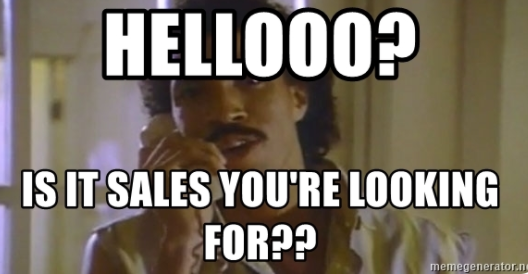
They're both looking for leads and sales. Here are the strategies.
Inside Sales Strategies
Inside sales strategies focus on efficiency, scalability, and digital engagement. Reps work remotely, which means tools and tech play a big role in how sales are conducted. They include the following:
- CRM Integration and Automation: A strong CRM is the backbone of any inside sales strategy. It streamlines lead tracking, automates follow-ups, and manages sales cadences. Automation tools allow reps to stay consistent with outreach while maintaining personalization at scale.
- Digital Communication Optimization: Since all interactions happen online, inside sales reps must master digital channels—email, social selling, phone calls, and video conferencing. Optimizing subject lines, call scripts, and response times can significantly boost engagement.
- Virtual Demonstrations and Webinars: Without the luxury of face-to-face meetings, inside sales reps rely on live demos and webinars to show off product capabilities. These tools help close the gap between remote and in-person interaction, allowing prospects to experience the product firsthand—even from afar.
Outside Sales Strategies

Outside sales strategies focus on building rapport and closing deals through personal interactions. Since these deals often have higher stakes and longer cycles, trust and timing are key.
Here's how outside sales reps make the most of their face-to-face advantage:
- Relationship Building through Personal Interaction: Reps build trust through eye contact, shared coffee meetings, and on-site visits. These touchpoints are harder to replicate remotely, which is why outside sales is preferred for high-value accounts where relationships drive long-term contracts.
- Territory Management and Route Planning: Since outside sales representatives often travel, organizing their routes efficiently is crucial. Good territory management means identifying the highest-value prospects and planning visits that minimize downtime.
- Tailored Sales Presentations: In-person meetings give outside sales reps the flexibility to adapt their pitch on the fly. Unlike inside sales, which may rely on standardized decks, field reps can respond to cues in real time, customize their approach, and even physically demonstrate a product's impact. This tailored approach often makes the difference when comparing field sales vs inside sales close rates.
5 Methods to Improve and Automate Sales Process

Regardless if you rely on inside versus outside sales, these five methods are a must-have for the sales team.
- Utilizing a Sales CRM
- Implementing Automated Drip Campaigns
- Leveraging AI for Lead Scoring
- Integrating Communication and Collaboration Tools
- Analyzing and Optimizing Sales Performance Metrics
Utilizing a Sales CRM
An effective sales CRM is the foundation of a scalable sales process. For both inside and outside sales, a well-integrated CRM helps track interactions, manage leads, and automate follow-ups across the funnel.
For instance, Ringy stands out as a sales CRM tailored for modern teams. It supports SMS, calls, and email automation all in one platform, making it ideal for inside sales reps who handle large volumes of contacts and want to maintain a high-touch experience.
For outside sales, Ringy's mobile functionality helps reps stay connected on the go—keeping data updated in real time after client visits or field appointments.
When comparing inside sales vs outside sales, CRMs like Ringy help bridge the gap, giving visibility into rep activity, deal stages, and performance from one centralized hub.
Implementing Automated Drip Campaigns
Automated drip campaigns allow inside sales reps to nurture leads at scale while personalizing each step of the journey. These campaigns deliver emails, texts, or voicemails at scheduled intervals based on user behavior, ensuring that no opportunity goes cold.
For outside sales, automated sequences can serve as follow-ups after in-person meetings, keeping the conversation going while the rep is on the road.
Automation reduces manual work, improves consistency, and supports faster response times—critical factors in winning deals before the competition.
Leveraging AI for Lead Scoring
AI-powered lead scoring allows teams to prioritize the most promising prospects based on behavior, engagement, and demographics.
AI tools analyze patterns in your CRM to determine which leads are most likely to convert, allowing inside sales teams to focus their outreach. For outside sales, AI-driven insights can help reps choose where to spend their limited in-person time—maximizing impact and return on effort.
It's the smart way to work through high volumes of data and find the right prospects faster.
Integrating Communication and Collaboration Tools
Smooth communication is non-negotiable—especially when you're managing hybrid models of inside and outside sales. Integrating tools like Slack, Microsoft Teams, or Zoom into your sales stack allows teams to collaborate in real time and share insights quickly.
Inside sales teams benefit from live notifications, shared calendars, and instant updates on lead activity. Meanwhile, outside sales reps can sync notes and meetings while out in the field, reducing the chance of lost details or duplicate work.
Analyzing and Optimizing Sales Performance Metrics
Whether you're running an inside sales operation or managing field sales reps, you can't improve what you don't measure. Tracking metrics like conversion rates, pipeline velocity, average deal size, and response time is essential for identifying what works—and what doesn't.
Use dashboards and reporting tools within your CRM to review performance across both inside vs outside sales functions. Inside teams might track email open rates or call-to-close ratios, while outside reps can monitor meeting-to-close conversion or territory success.
Over time, these insights allow you to refine your strategy, coach your team more effectively, and align your sales model with long-term growth goals.
Top 4 Sales Software in Today's Market
We've thrown a lot of information at you, so we'll get right to the point. Here's where you can find the software to support your inside and outside sales teams.
*Note: All pricing details are accurate as of April 2025*
|
Software |
Key Features |
Price |
|
$109/month |
|
|
$25/user/month |
|
|
$249/month (billed annually) |
|
|
$14/user/month (billed annually) |
1. Ringy

(It's us, btw.)
Ringy is an all-in-one, cloud-based CRM solution that offers tools no matter what type of sales works best for the team.
Added features of implementing Ringy include SMS and email automation, reporting and analytics, upline support for coaching sales agents in real-time, and progressive dialing solutions.
Because Ringy is cloud-based, it's an excellent solution for outside sales reps because they can take all the lead data on the go or take calls from their cell phone, anywhere with a wifi connection.
We offer a free 14-day trial and with the value of $109/month, an obvious choice for inside or outside sales.
2. Salesforce

One of the most popular choices for sales software.
It's easy to see why, since this platform offers solutions for businesses of all sizes and types. In addition to automation, Salesforce includes a mobile application and customizable report generation.
While it does offer a 30-day free trial and a $25 price, it's an excellent choice for new businesses, but costs increase as the team grows.
3. Keap

Keap is a great choice for all team sizes (including solopreneurs).
With Keap, you'll get an all-in-one CRM-focused scalability. So, you're covered if you have a large team of inside sales reps. You're still covered if you have a small group of outside reps.
Best features for sales include the ability to build and personalize emails with automated responses.
To access more features, expect to pay upwards of $299/month.
4. Pipedrive
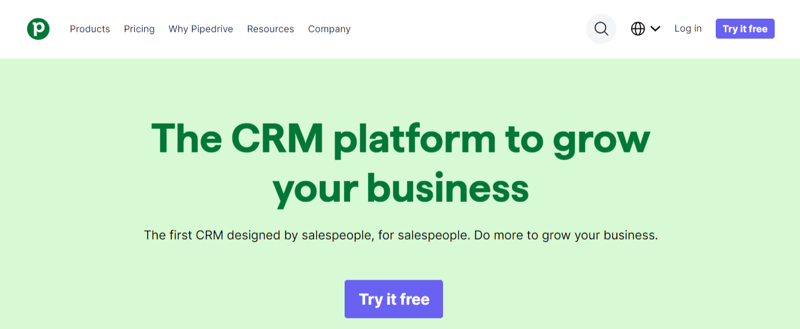
This sales software tool is perfect for new businesses or smaller teams.
Pipedrive shines with its ability to score and label leads automatically. Labeling allows hot leads to be followed up on and nurtured, allowing for better communication and an increased likelihood of closing the deal.
Pipedrive works well for inside or outside sales, but this software tool has a feature for managing territories for outside sales. Sales managers can assign outside sales reps to territories and automatically generate quota reports.
Aside from the Essential package, which costs $14/user/month, Pipedrive offers four other packages: Advanced ($39/user/month), Professional ($49/user/month), Power ($64/user/month), and Enterprise ($99/user/month), all billed annually.
Conclusion
By now, you should be able to answer what the difference is between inside and outside sales.
But there's no test here.
Inside sales take place from a remote office and focus on inbound leads. They cover large territories and complete a high sales volume, though typically close fewer deals than outside sales.
Outside sales take place outside of an office and focus on outbound or cold leads. They cover smaller territories and complete a lower sales volume with a higher value.
No matter what type of sales works best for you, we're here when you're ready to level up your sales strategy. Request a demo or a free, 7-day trial.

Skyrocket your sales with the CRM that does it all.
Calling? Check. SMS? Check. Automation and AI? Check. Effortlessly keep in touch with your customers and boost your revenue without limits.

Take your sales to new heights with Ringy.
Sales in a slump? Ringy gives you the tools and flexibility you need to capture leads, engage with them, and turn them into customers.
Subscribe to Our Blog
Enter your email to get the latest updates sent straight to your inbox!
Categories
Related Articles



















